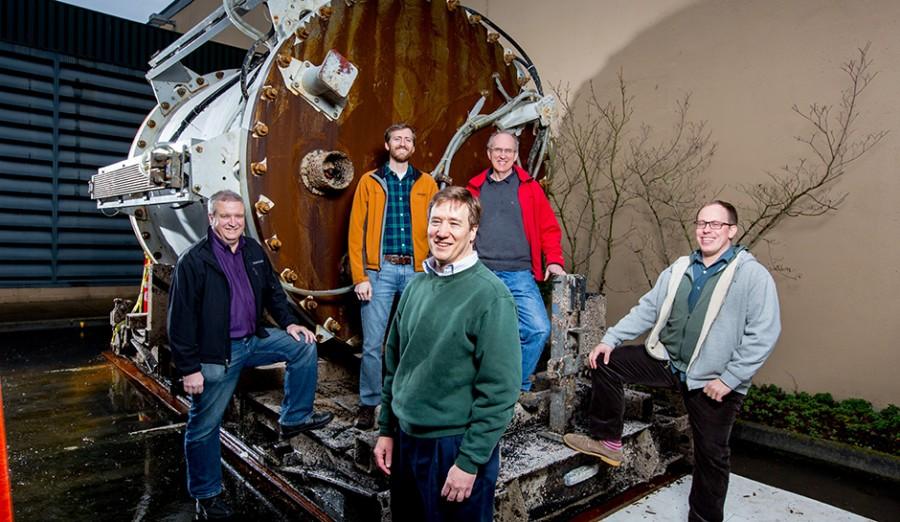Microsoft Going Underwater?
The Natick team poses next to one of the containers.
February 17, 2016
Back in 2014, a research paper was written by several Microsoft data center employees. The paper discussed the idea of a self-contained data center that could operate hundreds of feet below the surface of the ocean. In late 2014, Microsoft decided to go with the paper and created Project Natick. Project Natick is being lead by Sean James, who is a Microsoft employee that served on the US Navy and was one of the authors of the paper. If this project is successful, Microsoft can eliminate one of the most expensive bills they get: the air-conditioning bill. Data centers are used for everything from hosting websites to store photos and watching videos on YouTube. With data centers being used non-stop, it tends to get hot real fast and cause a high cooling bill. Using a water-based solution which is always cool can help fix this problem.
The way it would work is that the data center would be spread out in a particular area and they would be tied together with steel links and fiber-optic cables. With a normal data center, if a problems occurs it’s a lot easier to drive to the data center than to go underwater to fix the problem. The way they would fix these containers will be to pull the one faulty unit up while the other servers continue working. They estimated the lifespan of the capsule to be about twenty years, with the hardware being pulled up every five years to be replaced.
Another version of this idea would be to suspend the containers beneath the surface. If they chose this version, the containers could capture the ocean’s current which can be used to create electricity to power the machine. The main advantage of both versions of the idea is that it can help with power, proximity to the user, and most importantly, cooling. The main disadvantage would be the environmental impact of sea life but no study has been conducted yet to show the impact it might have.
